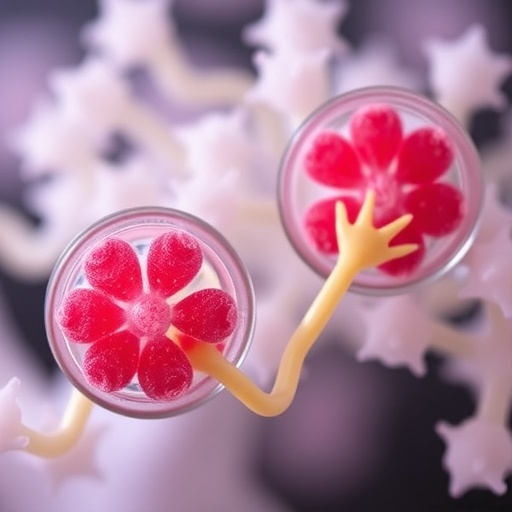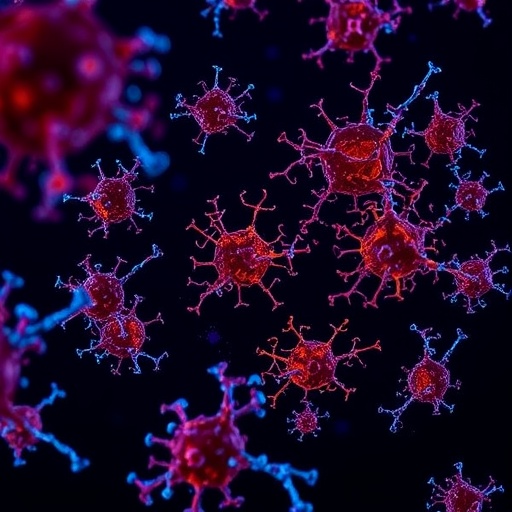
Credit: UT Arlington
Ashfaq Adnan, an associate professor of mechanical engineering at The University of Texas at Arlington, and his postdoctoral associate Yuan Ting Wu recently published research findings in Nature's Scientific Reports revealing that if battlefield blasts may cause cavitation in the brain's perineuronal nets, which, in turn, may collapse and cause neuronal damage.
Cavitation is the development of bubbles, much like those that develop around a ship's spinning propellers.
Existing scans and medical technology cannot detect whether cavitation bubble forms inside the brain due to blasts or how these blasts affect a person's individual neurons, the brain cells responsible for processing and transmitting information by electrochemical signaling. Adnan's research focuses on studying the structural damage in neurons and the surrounding perineuronal nets area in the brain. He then determines the point at which mechanical forces may damage the PNN or injure the neurons.
Adnan's paper, a result of research supported by a grant through the Office of Naval Research's Warfighter Performance Department and UTA, is titled, "Effect of shock-induced cavitation bubble collapse on the damage in the simulated perineuronal nets of the brain." Timothy Bentley is the program's director.
"This study reveals that if a blast-like event affects the brain under certain circumstances, the mechanical forces could damage the perineuronal net located adjacent to the neurons, which could lead to damage of the neurons themselves. It is important to prove this concept so that future research may address how to prevent cavitation damage and better protect our soldiers," Adnan said. "I must thank ONR and Dr. Bentley for supporting this important research topic. I also would like to thank Texas Advanced Computing Center for providing computational facilities."
Adnan and Wu simulated a shock wave-induced cavitation collapse within the perineuronal net, which is a specialized extracellular matrix that stabilizes synapses in the brain. The team focused on the damage in hyaluronan, which is the net's main structural component. Their results show that the localized supersonic forces created by an asymmetrical bubble collapse may break the hyaluronan. This improves current knowledge and understanding of the connection between damage to the perineuronal net and neurodegenerative disorders.
Other members of Adnan's team are Fuad Hassan, Mahmud Hasan and Ishak Khan, all who are pursuing their doctoral research on topics related to injury biomechanics.
Adnan's work is related to another Office of Naval Research project led by Michael Cho, professor and chair of UTA's Bioengineering Department. Cho's research is supported by a $1.24 million Warfighter Performance Department grant and examines how shockwaves on the battlefield cause brain tissue injuries and compromise the blood-brain barrier.
Duane Dimos, UTA vice president for research, said both projects are advancing knowledge in the way physicians understand and diagnose brain injuries. The work is representative of UTA's increasing research expertise focused on advancing health and the human condition under the University's Strategic Plan 2020: Bold Solutions | Global Impact.
"Dr. Adnan's recently published findings offer important insight into how the brain is affected in combat scenarios," Dimos said. "Understanding the effects of blast injuries on the brain and knowing that cavitation occurs is an important step toward finding better ways to prevent traumatic brain injuries on the battlefield."
###
Adnan has been involved in more than $1.4 million in research support since he joined UTA in 2010 following post-doctoral work at Northwestern University. He earned his doctoral degree in aerospace engineering from Purdue University.
In 2015, he won a highly competitive $120,000 Early-concept Grant for Exploratory Research, or EAGER, award from the National Science Foundation to advance his work to modify molecular structures and blend ceramics to create new material that would be less brittle but retain the strength of the original ceramic.
He also has received summer faculty fellowships with the Air Force Office of Scientific Research and the Office of Naval Research.
Media Contact
Herb Booth
[email protected]
817-272-7075
@utarlington
http://www.uta.edu
Original Source
http://www.uta.edu/news/releases/2017/07/adnan-scientific-reports.php




